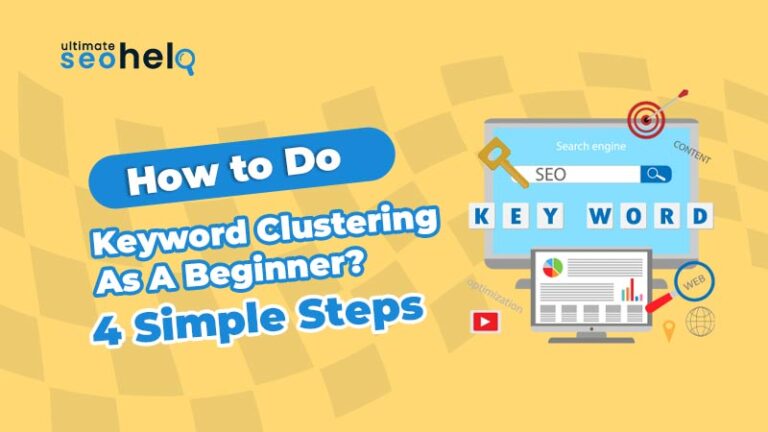Over the last decade, keyword research has changed a lot! During the early years, webmasters and so-called SEO experts used to stuff tons of keywords to rank their websites on the first pages of Google. It worked back then, but not now. The technical team at Google has focused on natural language processing and gaining a better understanding of the relationships between on-page information.
Google gets smarter with every core update. However, despite Google’s efforts to get smarter, many site owners still optimize their sites with only a few keywords in mind. It’s an outdated strategy, especially considering that our landing pages tend to rank for hundreds of keywords. As the capabilities of Google continue to advance, our SEO strategies also need to improve to keep up with the latest advancements in search.
So, how can we use Google to our advantage when optimizing our websites? The answer is “Keyword Clustering”. Let’s understand this topic in detail.
What Is Keyword Clustering?
Keyword clustering is a technique used in search engine optimization (SEO) and content strategy to group related keywords based on semantic similarity. The goal of keyword clustering is to organize and group semantically related keywords that share similar searcher intent.
In keyword clustering, relevant keywords are grouped according to factors such as:
- Topic: what they’re about
- Search Intent: What they’re looking for
- Semantic Relationships: Other connections
Keyword clustering is a technique that aims to improve a page’s ranking by grouping related keywords. This approach can help increase traffic and engagement. So, if you have already done your keyword research, it’s time you start doing keyword clustering to improve your website’s SEO strategy.
4 Easy Steps of Keyword Clustering in 2024
To harness the power of keyword clusters, it is crucial to note that using them to their full potential requires far more time and effort than simply optimizing a website once. Although, the term “keyword clustering” isn’t as fancy as it sounds but is very effective. You can check out the 4 easy steps that you can follow to align all your SEO strategies:
-
Generate a List of Initial Keyword
Begin by generating an initial list of keywords relevant to your website or content. Consider what your target audience might be searching for when searching for information related to your niche. You can brainstorm keyword ideas manually or use keyword research tool such as Google Keyword Planner, SEMrush, or Ahrefs to identify potential keywords.
-
Analyze and Identify Semantic Relationship
Once you have your initial keyword list, it’s time to analyze and identify the semantic relationships between the keywords. Look for similarities in terms of meaning, searcher intent, or topic relevance. Pay attention to words that frequently appear together or share common themes.
You can perform this analysis manually by organizing your keywords into groups based on their similarities. Alternatively, you can use keyword clustering tools such as K-Means, Topic Modeling, or LDA (Latent Dirichlet Allocation) to automate the process and efficiently identify keyword clusters.
-
Group Keywords & Create Clusters
Group the keywords into clusters based on the semantic relationships you identified in Step 2. Each cluster should contain closely related keywords that can be covered within a single piece of content. Aim to create clusters focused on specific subtopics or aspects of your niche. You can label each cluster based on the topic or theme it represents. This will help you organize your content strategy and plan the creation of comprehensive content for each cluster.
-
Optimize Content & Website Structure
Now that you have your keyword clusters, it’s time to optimize your content and website structure. Create comprehensive and focused content around each set by incorporating the related keywords into your content strategy. Ensure that you provide valuable and informative content that satisfies users’ search intent for those keywords.
Update your website structure by organizing your content into sections or categories to reflect the keyword clusters. This will create a logical and user-friendly navigation structure, helping search engines and users understand the organization and relevance of your content.
Remember to regularly review and update your keyword clusters as your content strategy evolves and new keywords and trends emerge. Keyword clustering is an ongoing process that requires continuous monitoring and optimization.
Start Creating Content with Keyword Clustering Now!
Using keyword clustering, you show Google that your website is a big deal in your industry and that you have top-quality products, services, or content to offer. Additionally, you’ll be feeding Google’s content signals with the content clusters that they are trained to recognize and prioritize in search results.
Keyword clustering is all about thinking bigger for your content. If you want your webpages to continue ranking on Google SERPs, it’s time to use keyword clustering to your advantage.


Comments are closed.